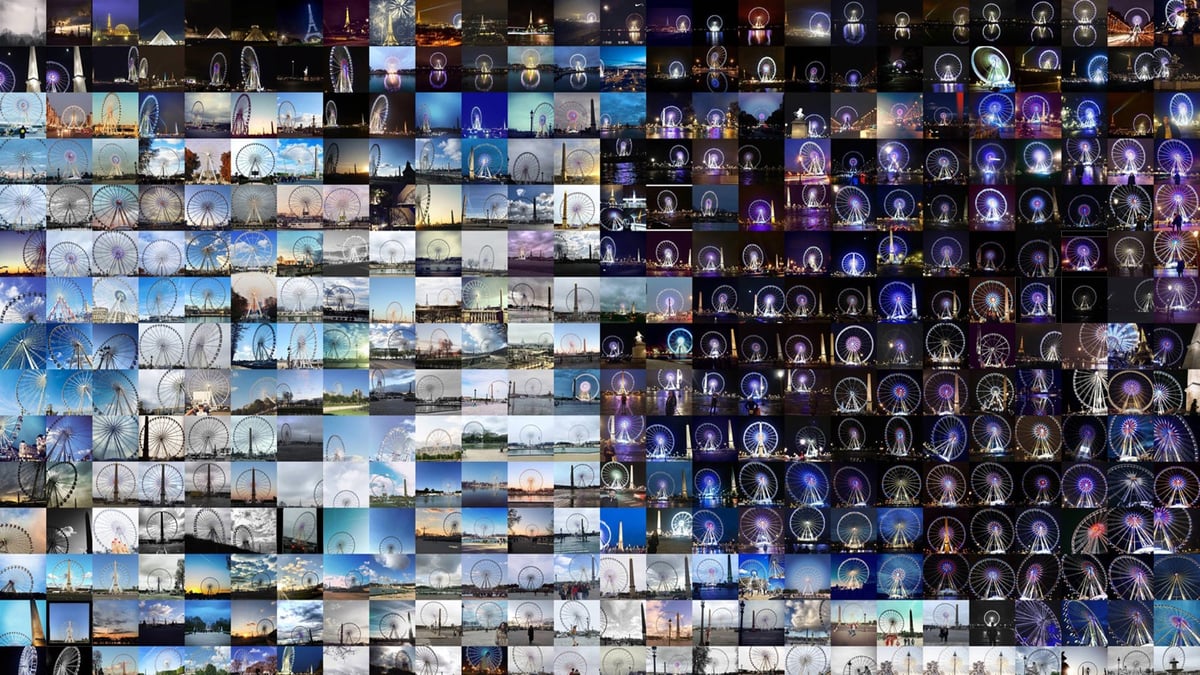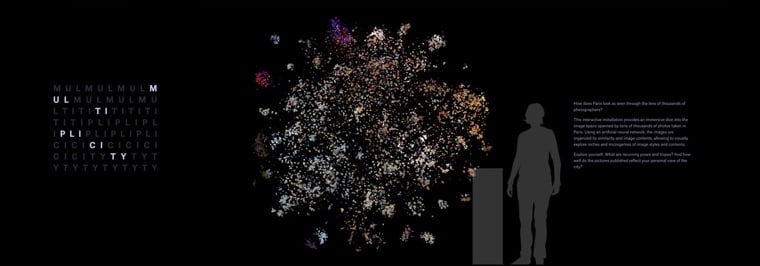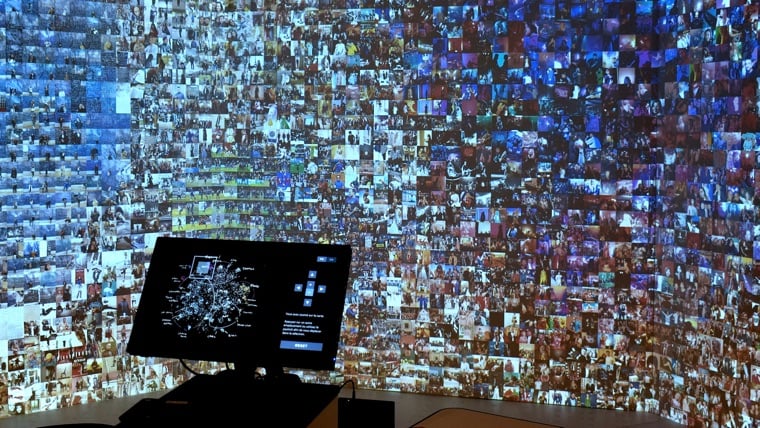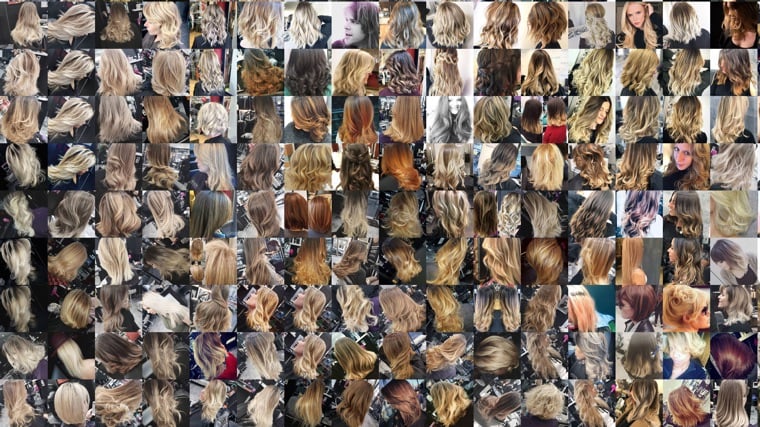Multiplicity

This is beautiful and fascinating, a representation of Paris through the photos shared online. The creator, Moritz Stefaner, used millions of Instagram pictures to create his Multiplicity installation. From those millions he selected 25K, then analyzed and classified them using neural networks and various processing tools. Presented on large screens, it offers touch and joystick control to dive into, pan and zoom through the clusters of images.
Today, we collectively and continuously document our city experience on social media platforms, shaping a virtual city image. Multiplicity reveals a novel view of this photographic landscape of attention and interests. How does Paris look as seen through the lens of thousands of photographers? What are the hotspots of attraction, what are the neglected corners? What are recurring poses and tropes? And how well do the published pictures reflect your personal view of the city?

The projected display seamlessly zooms from the cloudy overview map over a gridded version of the cloud to a full grid. This layering allows to understand the clustering and neighborhood structure well in the zoomed out view, while providing a tidy and efficient image display in zoomed views.


The interplay between automatic analysis, inspection of the results — what does the machine suggest and conclude — and my own actions — (in terms of layout, content selection, parameter tweaking…) was inspiring to explore.
As a design hint, the use of handwriting for the map annotations hints at the involvement of me as an active author and a subjective sense-making process.
The final result emerged from a dialogue between me and the city, the image contents and the algorithms, which actually managed to surprise and inspire me throughout the project.

The linked article provides a lot more details, including the process of placing the images and the software Stefaner used. The installation is part of the 123 data exhibition in Paris.
(Via @nicolasnova.)





Stay Connected